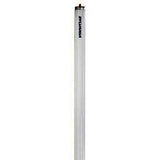Lack of Sun Causing an Increase in Seasonal Affective Disorder?
Posted by Nick on for ProLampSales

If you live in the Chicagoland area, you may have forgotten what the sun looks like. According to the Chicago Sun Times (no pun intended), this has been the gloomiest December on record. The sun has been out only 18% of the time between sunshine and sunset between December 1 and December 20. In fact, there has been no sunshine, other than 18 minutes, since December 12.
Why is this a problem? The reason is seasonal affective disorder, or SAD. A lack of natural daylight can lead to SAD, and depressing cloudy days can exacerbate the condition in people who are affected by it.
Combine shorter days during the winter, no sun at all for two weeks, the Bears giving up 35 points and two interceptions per game, come Monday morning you have all of the conditions for a depressing winter.
We've written a lot about seasonal affective disorder on this blog, because it is one of the conditions for which light therapy can provide relief. The Harvard Health Blog states the following about SAD and increased exposure to light:
If lack of sunlight causes or contributes to seasonal affective disorder, then getting more light may reverse it. Bright light works by stimulating cells in the retina that connect to the hypothalamus, a part of the brain that helps control circadian rhythms. Activating the hypothalamus at a certain time every day can restore a normal circadian rhythm and thus banish seasonal symptoms.
If being exposed to daylight is difficult because of the short days, the Mayo Clinic recommends using a "light box" to combat SAD:
A light box mimics outdoor light. Researchers believe this type of light causes a chemical change in the brain that lifts your mood and eases other symptoms of SAD. Most people use light boxes for a minimum of 30 minutes each morning.
Getting more daylight or daylight-quality light can help chase away those winter blues. While light boxes equipped with light bulbs emitting a strong blue wavelength are the most common consumer item for addressing the condition, any light bulb that provides full spectrum light should also help.
A light bulb that emits full spectrum light mimics the visible wavelengths in daylight. Most importantly for treating SAD symptoms are the blue wavelengths in the spectrum. Any higher intensity fluorescent or LED light bulb that has a color temperature of 5000K or higher will provide sufficient illumination to help someone suffering from SAD. Additionally, look for a color rendering index (CRI) of 90 or above.
So, if you're from Chicago, a Bears fan, or have the winter blues, exposure to a blue spectrum (or full spectrum) light source may be good for you. Check with a doctor if you suspect you have SAD.
- Posted in Health
Featured Products (View All)
0 Comments



